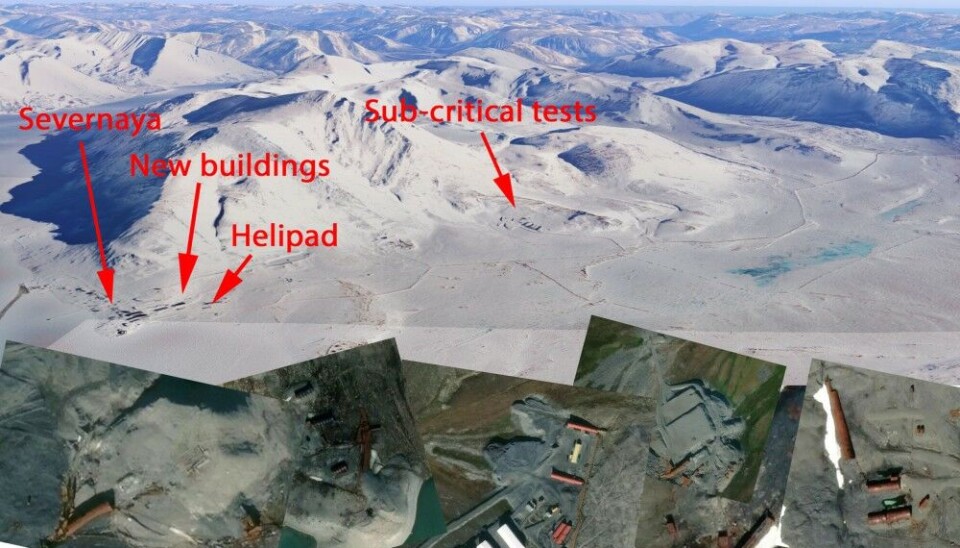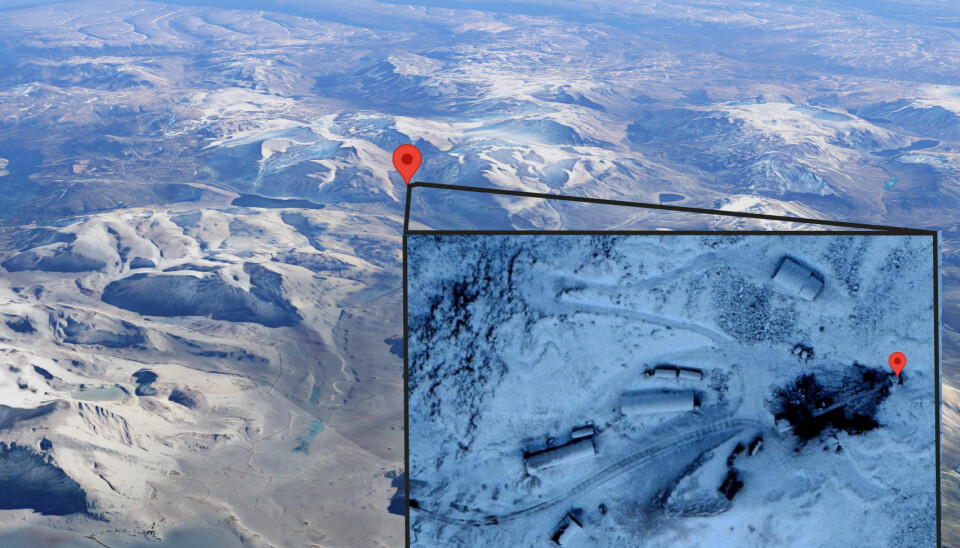
No signs of any imminent nuclear tests at Novaya Zemlya
Amid dark rhetoric from the Kremlin, lawmakers and propagandists with threats to abandon the test ban treaty, there are hardly any visible indications at Russia’s Arctic test site substantiating ongoing preparations to resume nuclear tests.
Satellite images that the Barents Observer has studied together with the Norwegian-based Bellona Foundation this summer and autumn show building activities at Severny, the settlement supporting Russia’s only active polygon for testing of nuclear weapons materials. The buildings, however, can’t directly be tied to a change in policy towards real tests of nuclear warheads.
There is no evidence supporting that the tunnels in the valleys south and west of Severny are being prepared for real nuclear detonations.
The question is important because the call for resumption has been voiced loudly in recent propaganda.
This week in short:
- Physicist Mikhail Kovalchuk, head of the Kurchatov Institute and a near ally of Putin, said Russia should carry out nuclear weapon tests “at least once” at Novaya Zemlya to scare the West.
- Chief propagandist, RT’s editor Margarita Simonyan, proposed detonating a thermonuclear device “somewhere over Siberia” to knock out all electronic devices and satellites as a “painful” message to the West.
- Civil defense forces held a nuclear war drill across all regions of Russia to test rescue workers’s ability to evacuate large number of people affected by radiation fall-out. The exercise scenario foresaw a massive nuclear attack from the West.
- In his speech to the annual Valdai Discussion Club, the Russian dictator could not rule out the possibility that the country could withdraw from the Comprehensive Test Ban Treaty (CTBT), although he underlined that he was “not sure if we need to carry out nuclear tests or not.”
- Putin used the Valdai stage to once again say Russia had tested with success the nuclear-powered Burevestnik missile. It was, however, unclear if the test he referred to was this autumn or at a previous time.
- Chairman of the State Duma, Vyacheslav Volodin, said the parliament could swiftly consider a possible need to revoke Russia’s ratification of the CTBT.
International media, among them CNN, in September reported about the ongoing construction works at Severnaya and linked two new buildings to a possible resumption of nuclear testing. The buildings are located between the helipad and the houses for the personnel working at the base.
The buildings could also be a replacement for older facilities from Soviet times as part of Russia’s ongoing military modernization of all Arctic bases.
In August, Defense Minister Sergey Shoigu visited the constructions together with Rosatom boss Aleksei Likahsev. It is Rosatom that is in charge of developing and maintaining Russia’s nuclear weapons.
There are more than 30 tunnels into the permafrost mountains at the northern test range. Most of them were used for underground nuclear testing in the 26-year period following the 1963 Limited Test Ban Treaty banning nuclear weapons testing in the atmosphere, in outer space and underwater.
Three of the areas, nearest to Severny, are of special interest. Two of them are entirely fenced off with barbed wire and access gate control, while the third is likely home to Russia’s ongoing program for sub-critical tests.
Although the roads deeper into the valley are maintained and trucks periodically can be seen at some locations, there are no changes, or hint of new tunnel constructions in recent months.
“We haven’t seen activities near any of the tunnels that indicate more than the continuation of the ongoing sub-critical tests program,” says Frederic Hauge, head of the Bellona Foundation.
Bellona has monitored the nuclear developments in Russia’s northwest all since the group sailed its boat MS Genius to the waters outside Novaya Zemlya in 1990, protesting the Soviet Union’s nuclear testings.
The final multiple nuclear device test took place in Zone B at Novaya Zemlya on October 24, 1990.
Bellona is currently making an analysis of all available information about Rosatom’s weapons programs carried out at Novaya Zemlya. That be the sub-critical testings, possible preparations for real nuclear testings, and the ongoing test program for the nuclear-powered Burevestnik missile at the Pankovo field some 30 kilometers south of the Matochkin Strait.
Post-Soviet tunnels
Last modification of a tunnel entrance was according to the James Martin Center for Nonproliferation Studies made in 2016, at the D-11 area, about 14 kilometers southeast of Severny. This tunnel was first prepared for possible nuclear tests in the early 2000s, according to a paper by Science and Global Security.
Work at the tunnel was resumed in 2016 and continued at least until the last Google Earth image from the area was updated in October 2021. If Russia later chooses to blow a nuke, it will most likely take place here.

“We still think a full-scale nuclear test is unlikely, but what worries us is all the rhetorics in recent days. One thing might take the other, and what is words today could be reality tomorrow,” Frederic Hauge says.
Bellona’s study, comparing satellite images of the tunnels from September and early October this year with images from a few years back, will be published in the near future.
In his Sochi speech for the Valdai Club, Putin said: “I listen to calls to start testing nuclear weapons, to return to testing.”
“I’m not ready to say whether we really need to conduct tests or not,” Putin said and let the uncertainty trigger further speculations.
Expects responsibility
In Norway, the news that Russia is considering revoking its ratification of the test ban treaty is met with deep concern.
“It would be very negative for the work on nuclear disarmament if Russia were to choose to withdraw from the agreement,” said Foreign Minister Anniken Huitfeldt. “We expect that Russia is aware of its responsibility.”
Norway’s northeastern corner is only 900 kilometers away from the test site at Novaya Zemlya and suffered massive fallout of radiation from the days when the Soviet Union detonated thermonuclear weapons in the atmosphere in the late 1950s, and early 1960s.
Although the tests would take place inside a mountain, the rock formations at Novaya Zemlya have previously been proven to crack and release radioactivity into the atmosphere. Like the 1987 test in a tunnel at Moiseev Mountain when five nuclear devices with a total yield of 150 kilotons were detonated.
Severnaya: Move the slider to see the appearance of the new 200-meter-long building from 2022 to 2023.














